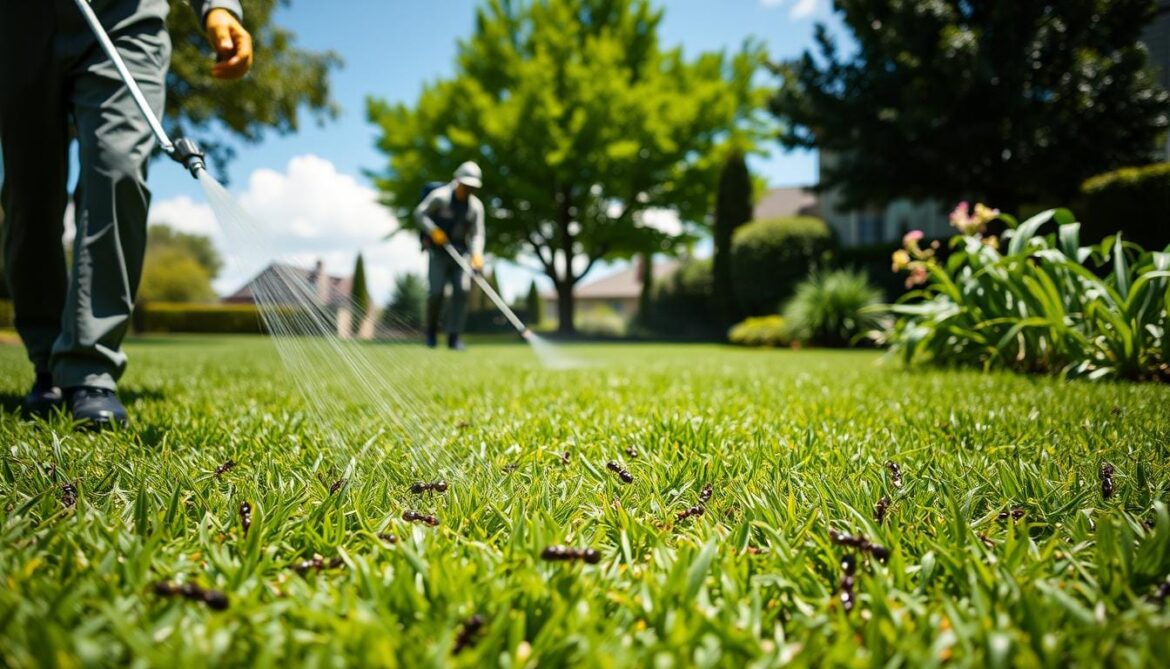A lush, green lawn is a pride for many homeowners, but unwanted visitors like ants can quickly turn that pride into a nuisance. While ants can be beneficial by controlling other pests, large colonies can create unsightly mounds and damage grass roots.
Finding the right ant treatment for lawns is crucial. Effective management involves understanding when and how to treat infestations. For more information on specific ant control products, such as fire ant control options, exploring various resources can be helpful.
Our comprehensive guide will explore methods for identifying, treating, and preventing ant infestations, covering both natural and chemical ant treatment for lawns options.
Key Takeaways
- Understand the balance between controlling problematic ant populations and maintaining a healthy lawn ecosystem.
- Identify the type of ant infestation to choose the most effective treatment.
- Explore both natural and chemical treatment options for ant control.
- Learn preventive measures to avoid future ant infestations.
- Discover the importance of maintaining a healthy lawn to prevent ant problems.
Understanding Ant Infestations in Lawns
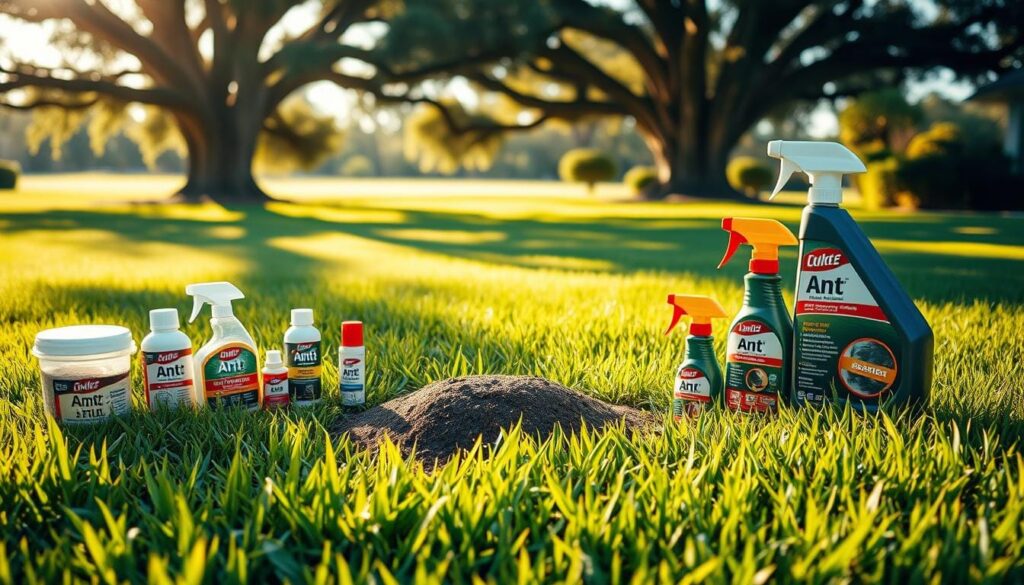
Understanding the impact of ant infestations is crucial for maintaining a healthy and visually appealing lawn. Ant infestations can lead to significant health and cosmetic damage to turf grass, making it essential to comprehend their effects.
How Ants Affect Your Lawn
Ants can cause considerable damage to lawns by creating underground tunnels that remove soil from grass roots, causing them to dry out and die. As stated by experts,
“The tunneling activity of ants can lead to significant root damage, ultimately affecting the overall health of the lawn.”
The mounding process associated with ant infestations can also smother small portions of turf grass, further contributing to the deterioration of lawn health.
Common Types of Lawn Ants
Different ant species can affect lawns in various ways. For instance, field ants are known to create large mounds up to 4 feet wide, while fire ants can deliver painful stings when disturbed. Understanding the specific type of ant infestation is crucial for selecting the most effective ant treatment for lawns.
Ant colonies can contain hundreds or thousands of individuals, creating extensive underground tunnel networks. The primary visible sign of ant infestations is the appearance of mounds, most noticeable from May through early September. While ants can damage grass, they also provide benefits like controlling other lawn pests and aerating soil. Maintaining a thick, healthy lawn is one of the best preventive measures against ant infestations.
Natural Ant Treatment for Lawns
Natural ant treatments provide a safe and environmentally friendly way to control ant populations in lawns. These methods are particularly appealing to homeowners who wish to avoid using harsh chemicals that could potentially harm beneficial insects or pets.
Borax and Sugar Solutions
Borax, a naturally occurring mineral salt, can be used to effectively eliminate ants. To create a borax and sugar solution, mix equal parts sugar and warm water with a couple of teaspoons of borax. Soak cotton balls in this mixture and place them near the ant nests.
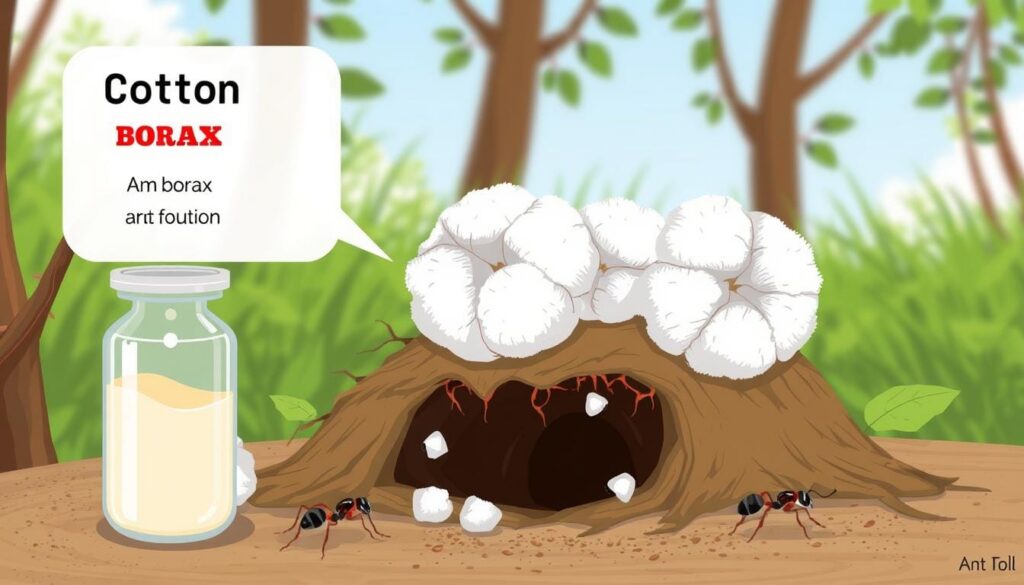
Diatomaceous Earth Method
Diatomaceous earth is another effective natural ant treatment. It works by physically damaging the ants’ exoskeletons, causing them to dehydrate and die. When using diatomaceous earth, it’s essential to wear a protective mask to avoid respiratory irritation.
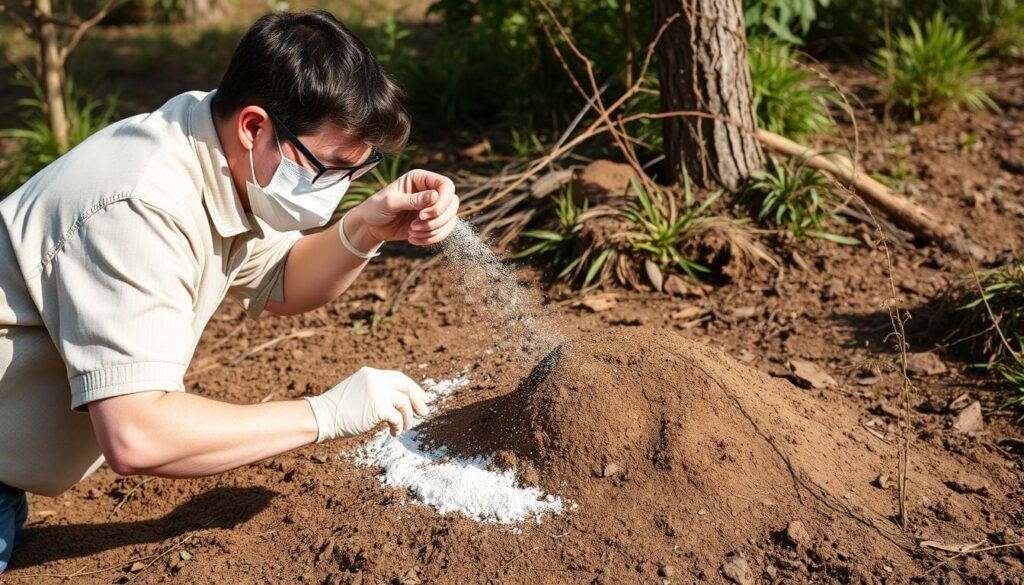
Dish Soap Spray Solutions
A simple and effective ant treatment involves using a dish soap spray. Mix a 3% solution of dish soap with water and spray it directly on infested areas. Adding a spoonful of vegetable oil can enhance the solution’s effectiveness by helping it stick to the ants.
These natural ant treatments offer environmentally friendly options for controlling lawn ant populations. Regular lawn maintenance, such as weekly raking of ant hills, can also help disrupt colonies and prevent the formation of hardened mounds.
Chemical Ant Control Options
Chemical ant control methods are considered when natural treatments are ineffective or when dealing with aggressive ant species like fire ants that pose health risks. These methods are particularly useful for severe infestations where the queen’s elimination is crucial.
Granular Ant Baits
Granular ant baits work on a delayed-action principle, allowing worker ants to carry the bait back to the colony and share it with the queen and other ants, eventually killing the entire colony. For effective application, scatter the product over nest openings without disturbing the mound.
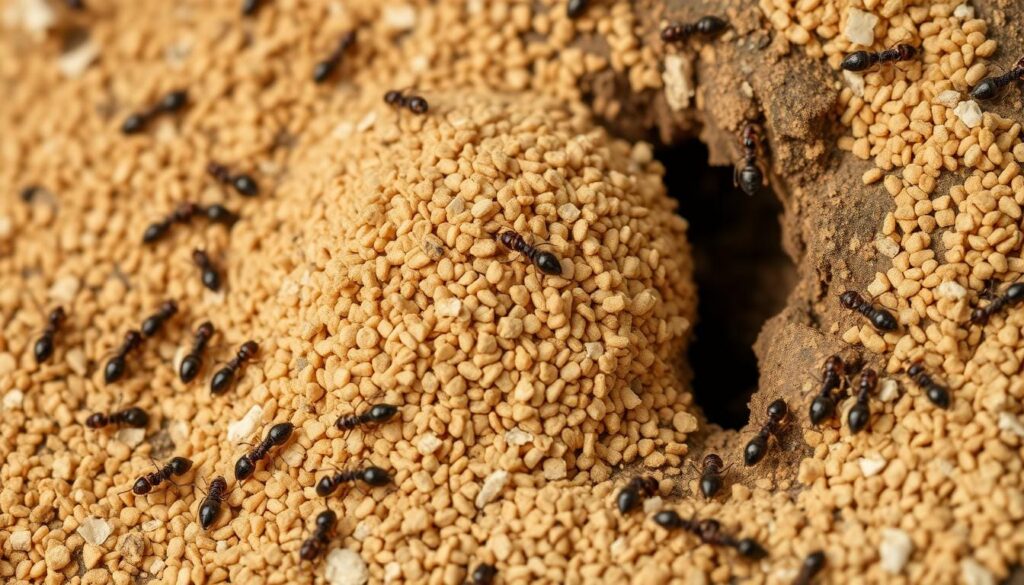
Liquid Insecticides
Liquid insecticides containing active ingredients like deltamethrin, bifenthrin, or permethrin provide fast-acting control when applied directly into the nest opening. This method is effective for killing ants that have infested your lawn.
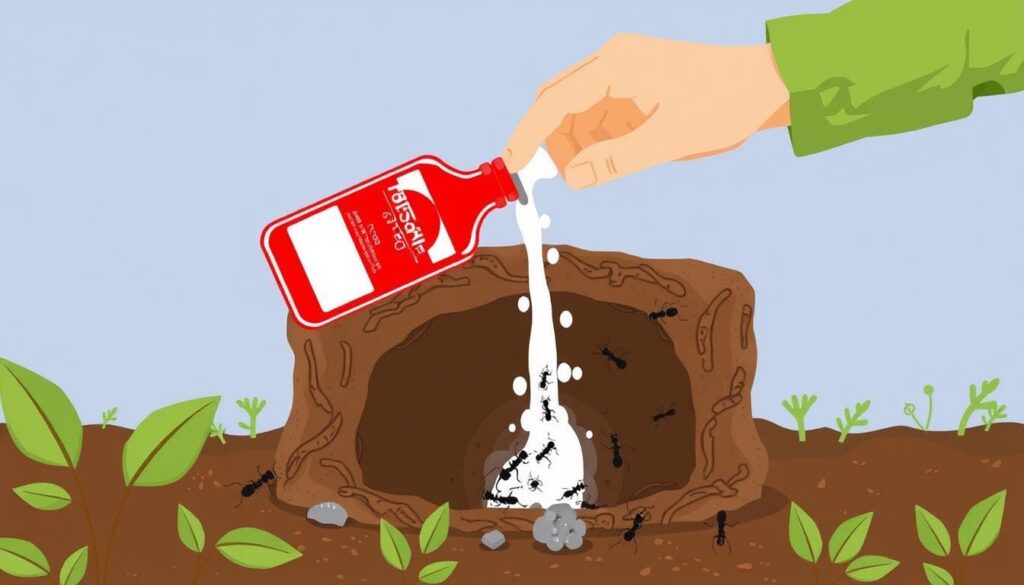
It’s essential to follow product label instructions carefully, especially regarding watering requirements, to ensure the effectiveness of the treatment and minimize environmental impact.
- Chemical ant treatments should be considered when natural methods have failed or when dealing with aggressive species.
- Spot treatment is recommended over broadcast application to minimize environmental impact and protect beneficial insects.
- Always follow product label instructions carefully.
Conclusion: Prevention Tips for Ant-Free Lawns
Effective ant management starts with maintaining a healthy and dense lawn. This can be achieved by mowing your lawn to a height of 3 inches and watering it deeply to foster a robust root system.
Regular lawn maintenance practices, including proper mowing height, deep watering, and appropriate fertilization, create conditions that discourage ant colonization. Additionally, addressing drainage issues in your yard can help prevent ant problems, as many species prefer to nest in dry, well-drained soil areas.
- Maintaining a thick lawn is key to preventing ant infestations.
- Proper lawn care practices, such as mowing and fertilization, discourage ant colonization.
By implementing these preventive measures and monitoring for early signs of infestation, you can effectively manage ant populations and maintain an ant-free lawn. Effective ant treatment for lawns is part of a comprehensive lawn care strategy.
